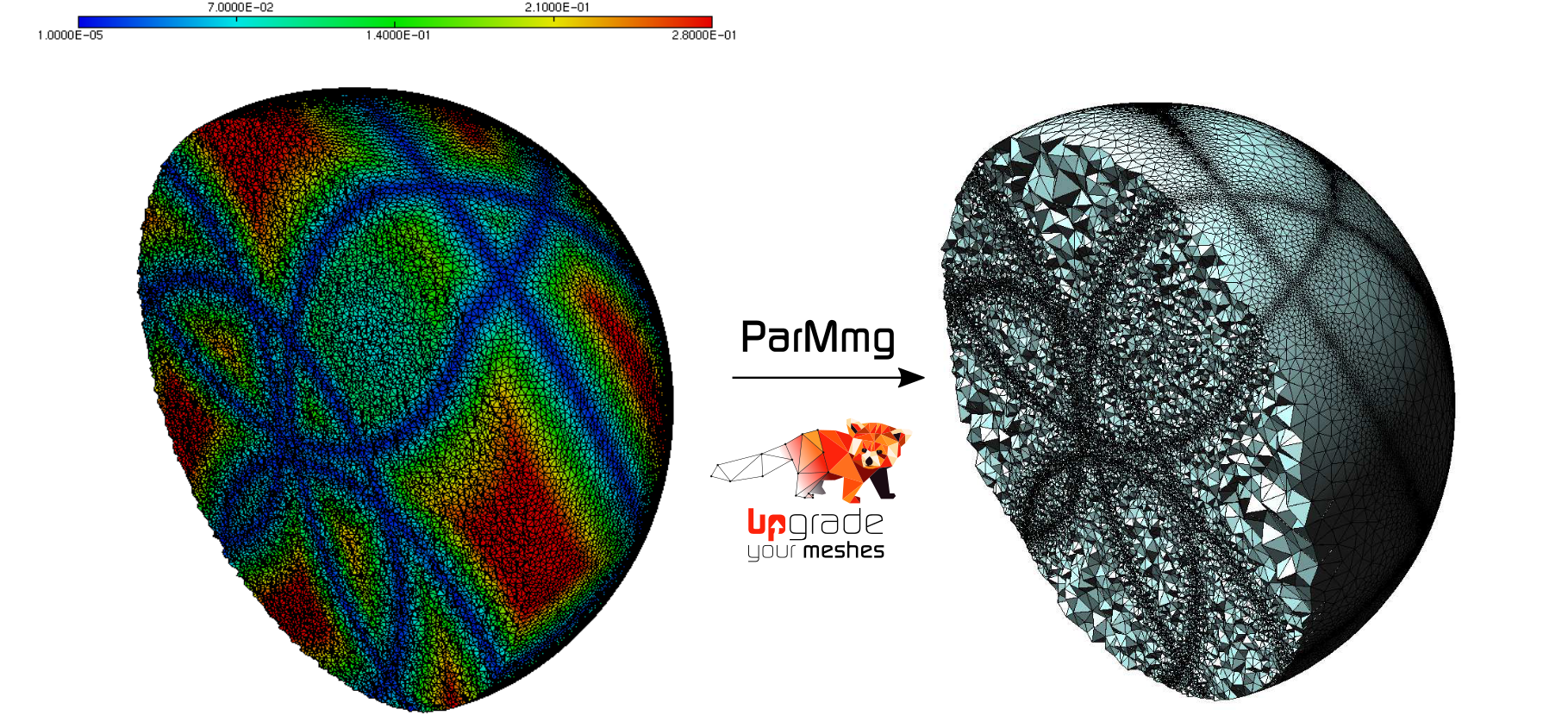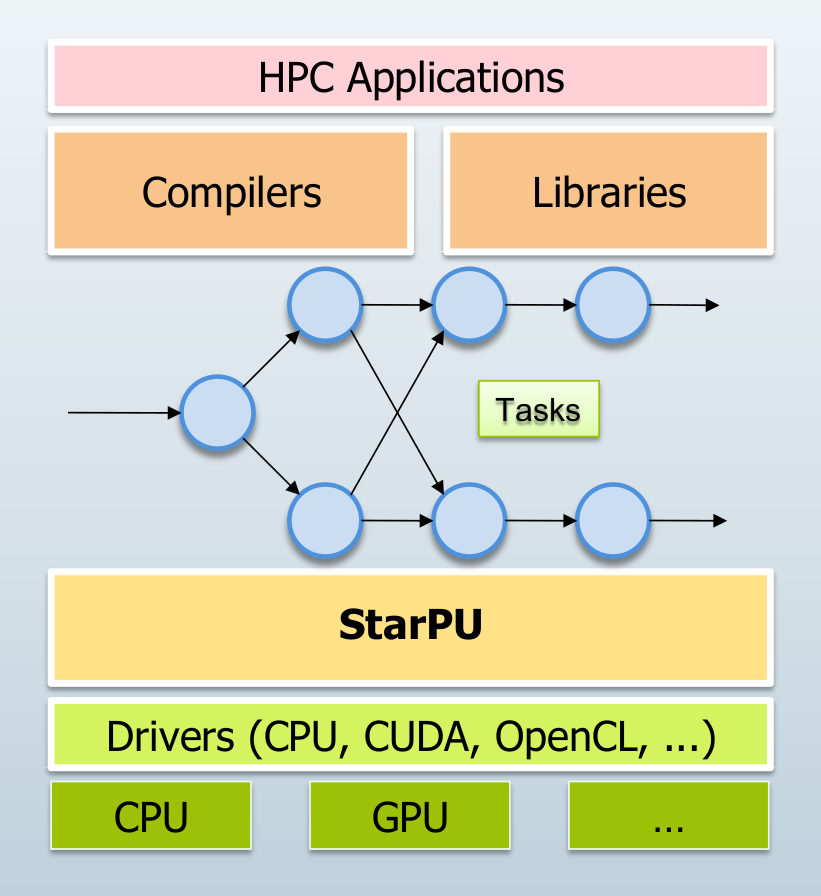ParMmg is an open source software (L-GPL) that performs 3D parallel mesh adaptation using MPI parallelization.
Mesh adaptation is an iterative process that allows to optimize the density and orientation of the elements of a computational mesh with repect to user needs (maximal admissible error over numerical solutions, boundaries representation, etc…). ParMmg is built on top of the Mmg software and aims at having the same capabilities, both in term of options than in term of usability:
– mesh quality improvement;
– isotropic and anisotropic mesh adaptation with respect to a user size-map;
– isosurface discretization;
– user friendly API.
The ParMmg developement is currently founded by the ExaQUte european project in which ParMmg will provide parallel mesh adaptation for the massively parallel simulations of the partners (few thousands of cores).
You can already use, download and try ParMmg, either as a standalone application, either through other software that interface us:
– the AeroSol library;
– the freefem++ solver;
– the Kratos multiphysics framework;
Thanks to PlaFRIM, we have the possibility to develop, test and profile ParMmg… and of course, to continuously improve it.

Contact: Algiane Froehly algiane.froehly AT inria.fr

